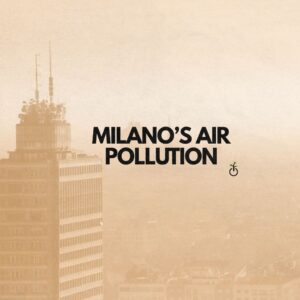The Rise of Circular Fashion
Fashion is a dynamic art and appeals to people’s tastes. While some people do not go beyond their own style, others get lost in fast-changing trends, shop more, and consume more. Therefore, this linear “buy, make and throw” model, which has been effective in the sector for many years, has caused significant damage to nature, even though it gave customers what they wanted: Millions of litres of water were consumed because of jeans, harmful gases were released for polyester…
However, thanks to the increasing environmental responsibility awareness and concerns in the last few years, the fashion industry has been pushed to zero waste production and sustainability. Policy makers, leading brands and consumers are slowly embracing this shift and making the necessary changes, but there are still limitations and challenges. This article explains how leading brands are embracing these circular economy ideas, how they can overcome the challenges and what the future of sustainable fashion holds.
What Is Circular Fashion?
The circular fashion focuses on reducing waste and promoting sustainability throughout the entire production process. Unlike the traditional linear model, which leads to disposal after use, it is based on “make”, “use”, and “return”, ensuring that materials are reused instead of throwing away. This model is built on three key principles:
Designing for Longevity
One of the key principles of circular fashion is creating long-lasting designs. It aims to make high-quality garments that can be repaired and reused is one of the foundations of this model. This reduces the demand for fast-fashion cycles.
Recyclability and Reusability
Another one is producing garments that are recyclable and reusable. Encouraging resale, and textile recycling plays a key role in reducing fashion waste
According to Statista Research Department, In 2023, the global market value of second-hand and resold garments is estimated to be worth approximately USD 197 billion. This value is projected to grow rapidly in the coming years, increasing by about 100 billion USD by 2026. And what is the reason for this? Because people, especially young people, have been looking for cost-effective and eco-friendly ways
Sustainability and Ethical Production
Finally, sustainable production. Ethical production is based on fair treatment of workers and responsible business practices in the production, including fair labor, safe working conditions and transparency. Also, the other important thing is to use environmentally friendly materials in fashion.
The choice of fabrics and materials is also crucial in order to build a sustainable supply chain. Fabrics like polyester and cotton are detrimental and have a high environmental cost. To reduce this harm, organic and natural fibers should be used, recycling should not be forgotten and sustainable manufacturing should be implemented.
Industry Response
With increasing ecological regulations and the growth of awareness for sustainable fashion, the industry is gradually integrating circular economy principles into its operations. Certain labels are actively adopting circular economy tenets to entirely cut waste and critical dependence on new materials, which might be a large upset for the apparel business. This change is viewed as rather important for combating ecological degradation as well as the ultimate depletion of resources — making the industry a potentially significant agent in sustainability efforts.
Globally, many companies use several methods to greatly reduce waste, broadly extend product life, and lower dependence on raw resources. Adidas and Patagonia are some examples of brands known for using circularity during the production processes.
Brand Examples
Patagonia’s Worn Wear Program offers items for repair, resale, as well as for recycling to extend product life. As part of this initiative, customers obtain store credits for returning older clothes, which Patagonia refurbishes and resells. This model calls for a broad and far-reaching pivot from disposable fashion toward durability along with circularity. It reflects larger business attempts at lengthening production phases, reducing fabric scraps, and increasing buyer participation in green habits.
In contrast, Adidas has pursued a product-focused pathway to circularity. One example of this is Futurecraft Loop, which is a sneaker made solely from recyclable materials. As opposed to footwear using composite materials and making recycling difficult, the Futurecraft Loop can be disassembled. Then, the Futurecraft Loop can be made into new shoes without using raw materials. While this innovation promises fixed-loop item plans, its scale is held back by a poor reuse structure and a lack of user participation in return programs. Even so, this action stresses that thorough waste reduction must be a result of planning rather than a consideration afterward in the operation.
Barriers to Circular Fashion
Yet these shifts are eclipsed by a set of structural obstacles to the mass adoption of circularity in fashion. One hold-up is consumer behavior—in the typical fast fashion culture, the inclination is toward low prices and a quick turnaround of trends over product lifespan. Consumers’ attitudes toward repair, resale, and recycling are changing, but shifting those habits will take education and incentives to move buying behavior toward sustainable options.
The movement toward circular style additionally suffers from many technical and structural limits. The proliferation of blended textile compositions poses many obstacles to the fiber-to-fiber recycling of textile materials, with these fabric technologies requiring advanced separation methods, which remain both cost- and knowledge-intensive. A main impediment to gathering and reusing old apparel—and increasing fabric care across the globe—is the lack of organized funding for building a broader scope of fabric waste management setups, along with global disparities in textile waste handling.
Greenwashing and Government Action
Greenwashing is still another pressing problem to consider. It harms genuine sustainability efforts across the industry. Companies puff themselves up excessively with marketing gimmicks that have nothing to do with operating under a new model. In summary, the direction of circular style hinges on a blend of legal expansion, technological growth, and customer participation in more ecological behaviors. This coincides as well with a growing trend: several policymakers are creating Extended Producer Responsibility (EPR) regulations, thereby holding brands responsible for the end-of-life management of their products.
Looking Ahead
Collaboratively, the government, the business sector, and the general population must come together to achieve the goals of circular fashion. The industry is able to shift towards a sustainable future that minimizes waste where clothing isCreated with an intention to last, instead of thrown away on a whim and focus greater on consuming responsibly, stricter regulations, and innovations.
Written by Duru Alper and Aurora Fontana
References
1. Ellen MacArthur Foundation. “A New Textiles Economy: Redesigning Fashion’s Future.” ellenmacarthurfoundation.org
2. Patagonia Worn Wear Program. “Repair, Reuse, Recycle.” wornwear.patagonia.com
3. Adidas. “Futurecraft Loop: The Fully Recyclable Shoe.” adidas.com/sustainability
4. Levi’s. “Buy Better, Wear Longer Initiative.” levi.com/sustainability
5. European Commission. “Circular Economy Action Plan.” ec.europa.eu/environment/circular-economy
6. Textile Exchange. “The State of Circular Fashion.” textileexchange.org
7. Sustainable Fashion Forum. “What is Circular Fashion” https://www.thesustainablefashionforum.com/pages/what-is-circular-fashion
8. CNBC. “What is the Circular Economy”. https://www.youtube.com/watch?v=__0Spwj8DkM
9. Ellen MacArthur Foundation. “Fashion and Circular Economy” https://www.ellenmacarthurfoundation.org/topics/fashion/overview
10. Statista. “Secondhand apparel market value worldwide from 2021 to 2028” https://www.statista.com/statistics/826162/apparel-resale-market-value-worldwide/




